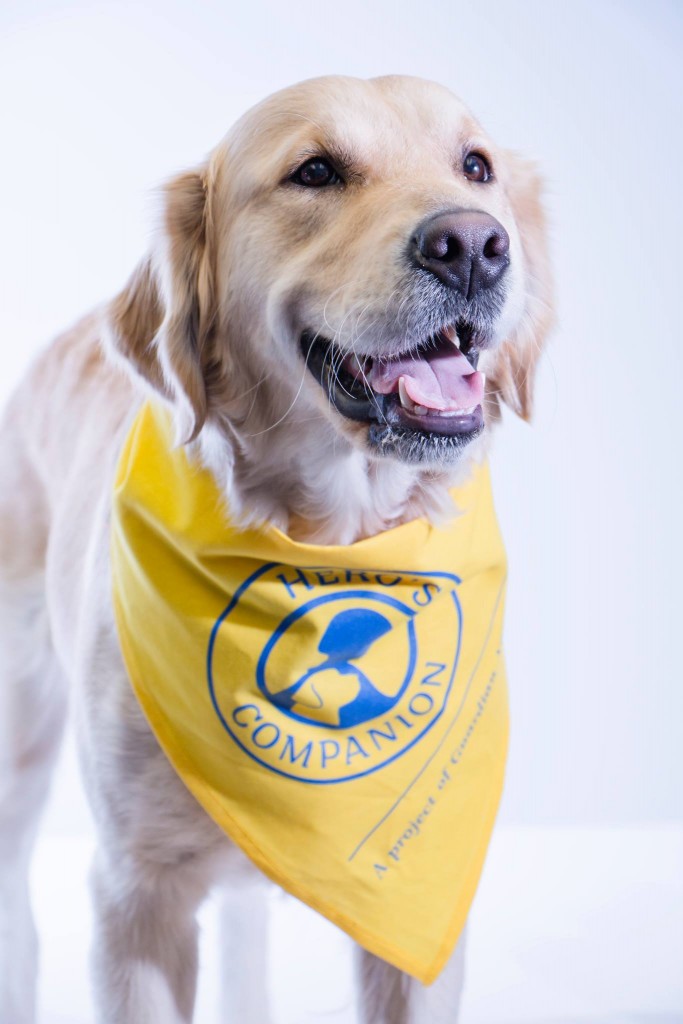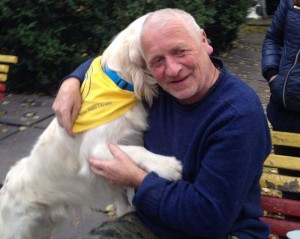A key component of Hero’s Companion is our therapy dog program. As part of this program certified therapy dogs visit military hospitals, rehabilitation centres, schools, community centres, summer camps, special events, and anywhere else we are welcome and needed! Currently the therapy dog program is active in Kyiv and the surrounding region, Lutsk, and Ternopil.
Therapy dogs can do wonders when it comes to lifting the spirits of those around them. They provide emotional and psychological support, and bring comfort and a sense of calm. This helps the patient open up and build constructive relationships with healthcare professionals. In this way, the therapy dog facilitates connection building, often acting as a bridge between the veteran and those trying to help him or her. Veterans who work with our therapy dogs often experience a reduction in their anxiety and depression, and experience better sleep.
“I obtained a lot of emotion from this interaction, they are wonderful… I will definitely be back. Your soul immediately becomes calm, and somehow you forget all of the bad things…â€
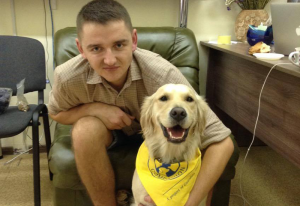
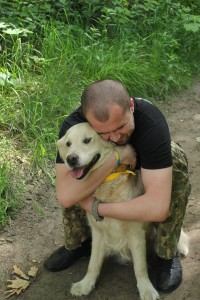
In a recent study, Canadian researchers praised therapy dogs for their healing, therapeutic abilities, noting that, “The dogs can have an impact on an individual’s healing journey in a multitude of ways, from providing comfort through to increasing therapeutic alliances with service providers.â€
There’s also a scientific reason behind why dogs make us feel good. Interaction with canine companions stimulates our brains to create oxytocin, a hormone that the brain excretes during certain social interactions. Scientists have found that oxytocin: helps us bond with our friends, romantic partners, and family (especially children); prompts our bodies to heal themselves; helps us trust each other; and reduces anxiety, fear, and stress.
From a psychological point of view, dog therapy is very beneficial because it draws people into group activities, and this is a type of social rehabilitation. During such therapy, the dog pulls a person out of the past, which is filled with worries and unpleasant memories, and brings them back to the present. Overall, this reflects very positively on the emotional state of the person, and as a result, improves the healing process.Â
– Oleksandr Klen, Head of the Department of Psychological Rehabilitation at the National Military Hospital
(Kyiv, Ukraine)
Hero’s Companion therapy dogs work in different formats, including in groups and individually. Sometimes their role is to simply be present, offering support, comfort, and grounding during therapy sessions. Other times they have a more physically active role, engaging patients in psychologically and/or physically rehabilitative tasks such as walking, various breathing and focus exercises, and play. The patients we work with – from veterans to special needs children – all have different needs and interact with the therapy dogs in different ways. For this reason we specifically tailor our programming according to the audience.
Initially, the Hero’s Companion therapy dog program was envisioned as a program for soldiers and veterans. However, it soon became apparent that other populations affected by war could also benefit from our therapy dogs. Today, our program works with former prisoners of war (POWs), internally displaced persons, children who have lost parents or have been forced to move as a result of the war, and special needs children.
“‘Hero’s Companion’ helps us a great deal. It is truly very effective,†underscores Dr. Tetiana Harchenko. She adds that her findings with regards to the results of this method are based on scientific research, which is continually being conducted at the clinic.
– “How dogs save those who have returned from warâ€
 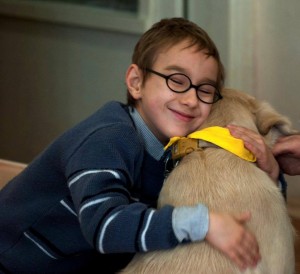 Whether the person is young or old, with every visit we see our therapy dogs providing a calming effect, promoting positive relations with caregivers and peers, improving focus and attention, and increasing confidence and feelings of well-being while decreasing nervousness, anxiety, depression, and fear.
Whether the person is young or old, with every visit we see our therapy dogs providing a calming effect, promoting positive relations with caregivers and peers, improving focus and attention, and increasing confidence and feelings of well-being while decreasing nervousness, anxiety, depression, and fear.
Hero’s Companion therapy dogs are distinguishable by their yellow bandanas with our logo on them. If you see one of our dogs don’t be shy – come and say hi!
If you (and your dog!) are interested in volunteering in our Therapy Dog program, please see our “How to Get Involvedâ€Â page.
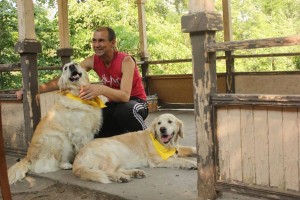
Our pictures:



